Diamond Triangle
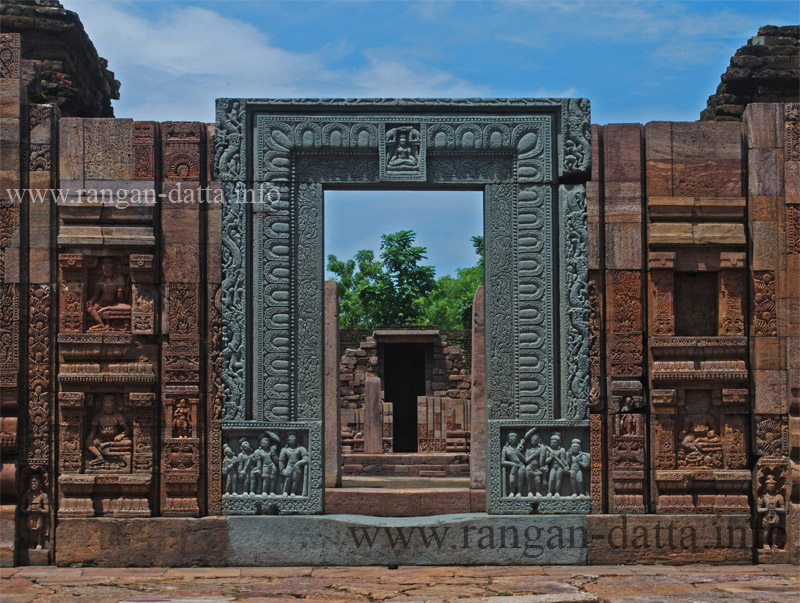 It was mid September morning and the dark monsoon clouds have been replaced with scattered white clouds, creating a striking contrast against the deep blue sky. As we moved out of the city of Bhubaneswar and our Tata Indigo ate of the miles of black tarmac of NH5, leaving us to enjoy the scenic beauty of Orissa with its lush green landscape and swelling rivers. It was mid September morning and the dark monsoon clouds have been replaced with scattered white clouds, creating a striking contrast against the deep blue sky. As we moved out of the city of Bhubaneswar and our Tata Indigo ate of the miles of black tarmac of NH5, leaving us to enjoy the scenic beauty of Orissa with its lush green landscape and swelling rivers.
Out destination – The Diamond Triangle, consisting of the three Buddhist sites of Ratnagiri, Udaygiri & Lalitgiri. Belonging to the Vajyarajyan sect of Buddhism, which is popularly known as the Diamond Vehicle, and hence the name Diamond Triangle. Visited by the Chinese traveller Hieun Tsang, the centres of learning were at par with their famed counterparts of Nalanda & Taxila.
Located about 100 km North – East of Bhubaneswar the Diamond Triangle, is the most important Buddhist site in Orissa, but sadly it is least promoted. There are no places to stay or even to eat, but you will have the ruins all to yourself and live up to the famous saying “I am the monarch of all I survey.”
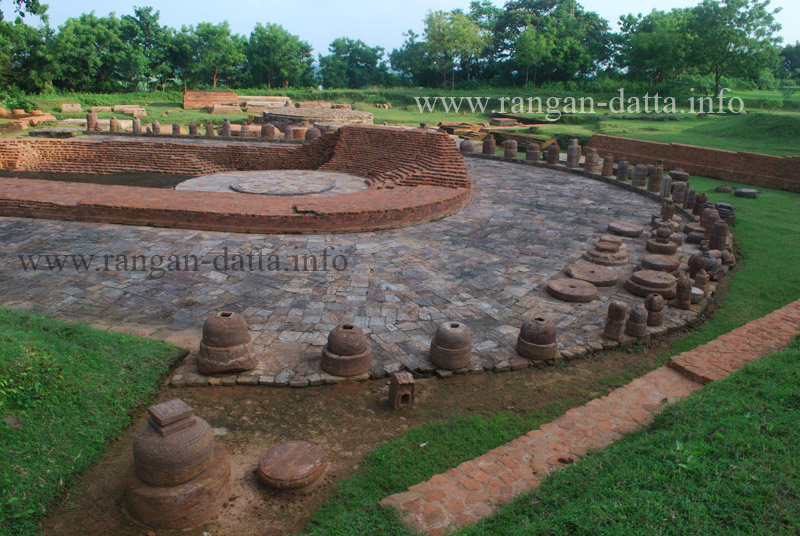 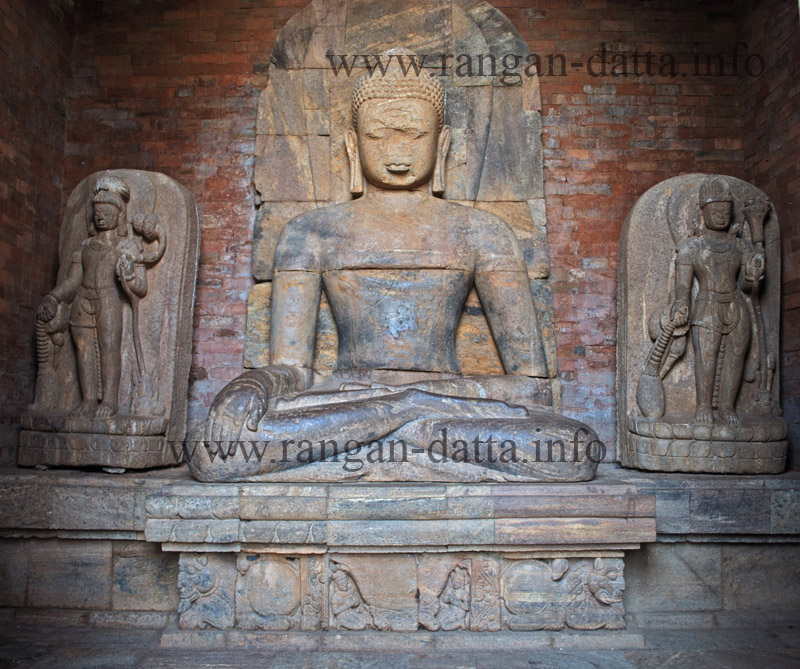
Our first stop was Ratnagiri and true to its name it is indeed a gem. It is the most excavated of the sites and is spread over a hilltop offering grand view of the surrounding. Excavated in 1960s the site yielded two rectangular monasteries and a large stupa surrounded by smaller ones, dating back to the 6 – 12 century AD. Its strategic location protected it from invaders and provided seclusion to the monk.
Entering the complex we headed straight for the larger monastery approached through an intricately curved door frame, leading on to an open courtyard. On the far end of the courtyard is the inner sanctum housing a giant statue of Buddha, in bhumisparsha posture, flanked on either side by statues of Padmapani and Vajrapani. Entire courtyard is decorated with artifacts collected from the excavation. They include several Buddha heads of different size, several statues and floral & geometrical motifs.
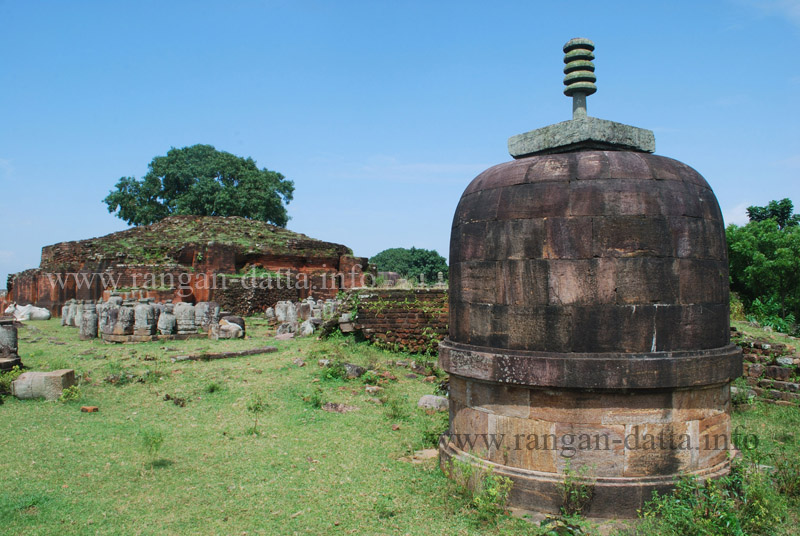
Next we visited the second monastery, much smaller in size it lacked the beauty and grace of its larger counterpart. Finally we headed for the giant stupa located on a hilltop, offering panoramic view of the rural Orissa landscape. The giant stupa is surrounded by several smaller stupas. We finally bade farewell to Ratnagiri, but not before visiting the small museum.
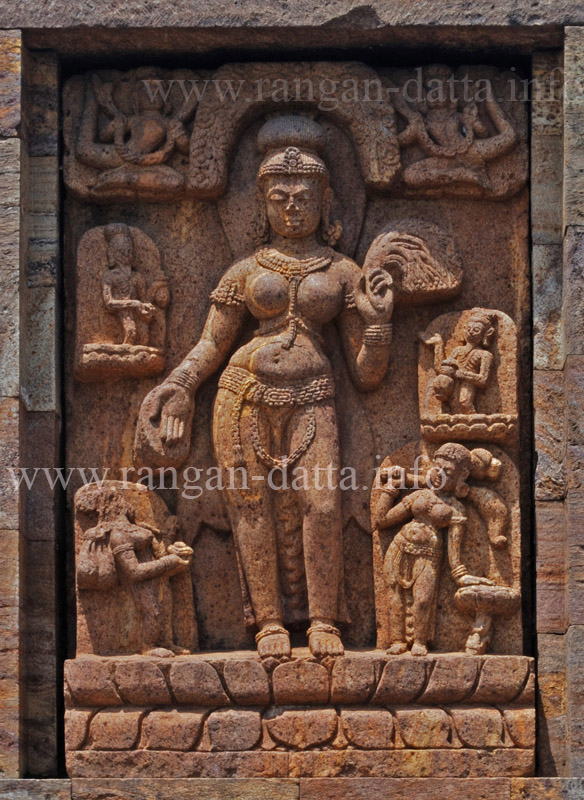 Our next stop was Udaygiri, the largest but the least excavated of the three sites. Excavation at Udaygiri started in 1960s, and have been carried out in several phases, and continues to this day. The archeological findings are classified in two parts, namely Udaygiri I and Udaygiri II. Our next stop was Udaygiri, the largest but the least excavated of the three sites. Excavation at Udaygiri started in 1960s, and have been carried out in several phases, and continues to this day. The archeological findings are classified in two parts, namely Udaygiri I and Udaygiri II.
Entering the complex we followed a tree lined path to an open space decorated with Buddha statues and other religious artifacts, excavated from Udaygiri. Next to the open space is a small step – well, with a long flight of stairs leading to the water bellow. Walking past the well we headed for Udaygiri II. Walking past the scattered ruins, we headed for the newly excavated monastery of Udaygiri, housing a colossal Buddha.
We followed a dirt trail leading to the main stupa of Udaygiri, housing four Buddha statues in the four cardinal directions. Walking past the stupa we visited the second monastery of Udaygiri, known as Udaygiri I, again housing a giant Buddha statue, complete with several other religious statues.
As we headed for Lalitgiri we finished off our packed lunch in the speeding car, saving precious time. A beautifully decorated Buddhist style gate on Pardeep highway greeted us to Lalitgiri. Lalitgiri is the holiest of the three sites, as excavation yielded a casket containing a sacred bone relic, probably of Buddha himself.
Entering the Lalitgiri complex we walked past four small monasteries, none matching the grandeurs of those of Ratnagiri & Udaygiri, to the U – shaped Chaityagriha, which once housed the tooth relic.
Finally we climbed the 45 steps to the giant Lalitgiri stupa, offering a grand view of flooded Orissa plains. After a short stop at the Lalitgiri Museum we headed for the village of Lalitgiri, where family of skilled sculptors are still carrying out their age old art.
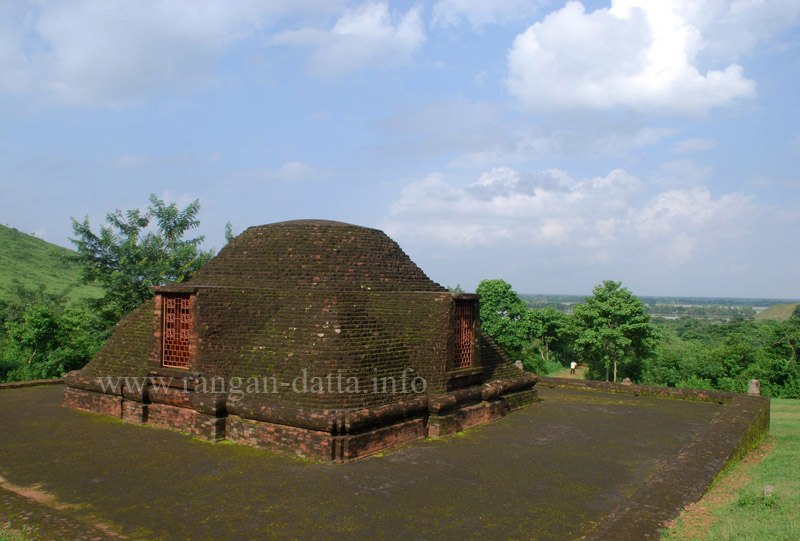 Necessary Information: Necessary Information:
Getting There: Bhubaneswar is well connected from Calcutta by Puri Express, Madras Mail, Jaganath Express, etc.
Places to Stay: It is best to stay at Bhubaneswar, which has hotels of all budgets. The Panthanibas at Ratnagiri is still under construction.
Places to eat: There are no places to eat so it is best to carry dry food and water.
Getting Around: It is best to hire a car from Bhubaneswar. Small cars charge Rs1500 for the entire trip.
|

